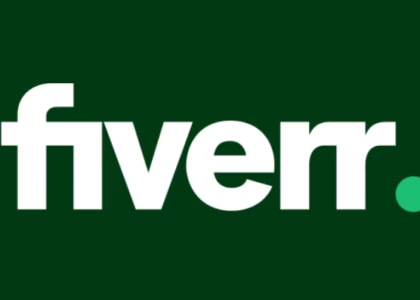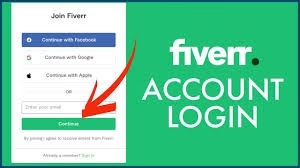PBN Backlinks In the ever-evolving world of SEO, link building is one of the most important strategies to boost website rankings. Among the many techniques, Private Blog Networks (PBNs) have gained significant attention. But what are PBN backlinks, and how do they work? Are they a legitimate way to improve your SEO, or are they a risky shortcut that can lead to penalties?
In this guide, we’ll dive deep into PBN backlinks, explaining what they are, how they impact your SEO, the risks involved, and best practices to follow. Whether you’re a seasoned SEO professional or a beginner, this article will help you understand how PBNs fit into the broader SEO landscape.
What Are PBN Backlinks?
Definition of PBN (Private Blog Network)
A Private Blog Network (PBN) is a network of websites owned by a single entity, typically used to create backlinks to a main website (target site). These backlinks are often generated through expired or expired domains with existing authority, providing an easy way to manipulate search engine rankings.
PBN backlinks are links that come from these networks of websites, offering link juice to your target site in a controlled manner.
How PBN Backlinks Work
PBN backlinks are essentially shortcuts for acquiring high-quality backlinks. Websites in a PBN are created or bought specifically to link to your main website, increasing its visibility and search engine rankings. The idea is to use the authority of the expired domains and direct it to your site through carefully placed links.
However, Google and other search engines consider this practice as a violation of their guidelines, as it attempts to manipulate rankings without natural link-building efforts.
Why Do People Use PBN Backlinks?
Quick SEO Results
One of the main reasons marketers and SEO professionals use PBN backlinks is for the speed at which they can improve rankings. PBNs provide instant link juice from domains that already have established authority and trust. This can quickly boost your site’s visibility in search results, especially in competitive niches.
Control Over Anchor Text and Link Placement
Another advantage of PBN backlinks is the level of control they offer. Unlike organic backlinks, where the anchor text and placement depend on other websites, PBNs allow you to choose exactly where the links go, what anchor text is used, and how many links are placed.
How PBN Backlinks Affect SEO
Authority Building
When you build or buy a PBN, the websites within the network often come from expired domains with existing authority. Linking to your site from these domains can transfer some of their authority (or “link juice”) to your site, helping it rank higher on search engines.
Ranking Benefits
PBN backlinks can give your site a significant boost in rankings, especially if the websites in your PBN are highly authoritative. By strategically placing links on high-traffic, well-established domains, you can push your site to the top of search engine results pages (SERPs).
The Risks of Using PBN Backlinks
Penalties from Google
While PBNs can provide quick SEO results, they also come with significant risks. Google has strict guidelines against manipulative link-building techniques like PBNs. If Google detects that you’re using PBNs, your site could be penalized, resulting in a drop in rankings or even de-indexing.
Negative Impact on Website’s Reputation
Using PBNs can also hurt your website’s reputation. If you’re caught using unethical link-building tactics, your website may be seen as less trustworthy by both search engines and users. This can damage your brand’s credibility in the long run.
How to Build a PBN
Finding Expired Domains
The first step in building a PBN is finding expired domains with high authority. These domains should have a clean history, meaning they weren’t involved in any spammy activities. You can use domain auction sites, expired domain marketplaces, or tools like DomCop to find expired domains with strong backlink profiles.
Setting Up the Website
Once you’ve acquired the expired domains, it’s time to set up websites on them. Each website should have unique, high-quality content and be hosted on different IP addresses to avoid detection by Google. It’s crucial to make each site look natural, with a professional design and useful content.
Creating Quality Content
After setting up the websites, the next step is to create quality content. This content should be relevant to your target niche, engaging for users, and rich with information. Avoid keyword stuffing and make sure the content flows naturally.
Best Practices for Using PBN Backlinks
Ensuring Link Diversity
To avoid detection, it’s important to maintain link diversity. This means not only using PBN backlinks but also mixing in other link-building techniques, such as guest posts, social media links, and natural backlinks. This creates a more natural link profile and reduces the risk of penalties.
Avoiding Link Spam
Don’t overdo the link-building from your PBN. If all the links are pointing to the same page or if the anchor text is overly optimized, it could raise red flags. Spread out your links and vary your anchor text to keep things natural.
Maintaining Natural Anchor Text Distribution
Ensure that the anchor text used in your PBN links is diverse. Avoid using the same keyword repeatedly. Instead, use a variety of long-tail keywords, branded terms, and generic anchors like “click here” to make the links look more organic.
How to Detect PBN Backlinks
Identifying Patterns in Link Profiles
If you’re trying to detect PBN backlinks on your site or your competitor’s site, look for unnatural link patterns. PBN backlinks often come from low-quality websites with identical or very similar footprints.
Tools to Detect PBN Links
There are several tools you can use to detect PBN backlinks, such as Ahrefs, Majestic, or SEMrush. These tools can analyze the link profile of a website and highlight suspicious or low-quality links that might be from a PBN.
Alternatives to PBN Backlinks
Guest Posting
One of the safest alternatives to PBNs is guest posting. By writing articles for other reputable websites in your niche, you can earn natural backlinks while also building relationships with other content creators.
White-Hat SEO Techniques
White-hat SEO focuses on building organic links through quality content, social media engagement, and collaborations. This method may take longer, but it’s much safer and more sustainable in the long run.
Should You Use PBN Backlinks?
Weighing the Pros and Cons
The decision to use PBN backlinks depends on your goals and risk tolerance. If you’re looking for quick results and are willing to take some risks, PBNs might be a good option. However, if you’re focused on long-term, sustainable SEO success, it’s better to stick with white-hat methods.
When PBN Links May Be Worth Considering
PBNs might be worth considering if you’re in a highly competitive niche and need to rank quickly. However, always weigh the potential consequences before diving into PBN link building.
Common Mistakes to Avoid with PBN Backlinks
Over-Optimization
Avoid over-optimizing your PBN links by using the same anchor text repeatedly. It’s essential to maintain variety and avoid patterns that are too predictable.
Poor Domain Selection
Choosing expired domains with poor link profiles or spammy histories can do more harm than good. Always vet domains thoroughly before purchasing.
The Future of PBN Backlinks in SEO
Changes in Google’s Algorithm
Google is continuously updating its algorithms to detect and penalize unnatural link-building tactics like PBNs. As a result, PBNs may become less effective over time as search engines get better at spotting them.
Trends to Watch in Link Building
As the SEO landscape evolves, link-building strategies will continue to shift toward more natural and ethical methods. Focus on building high-quality, organic backlinks for long-term success.
Conclusion
PBN backlinks can provide short-term SEO gains, but they come with significant risks. If you decide to use them, it’s essential to follow best practices and remain cautious of penalties. In the long run, white-hat SEO techniques offer a safer, more sustainable approach to link building.
FAQs
- What is the difference between PBN backlinks and natural backlinks? PBN backlinks are artificial links created through a network of websites, while natural backlinks are earned when other websites link to your content without manipulation.
- Can I get penalized for using PBN backlinks? Yes, Google can penalize your website for using PBN backlinks if they detect unnatural link-building practices.
- How do I find quality expired domains for a PBN? You can use domain auction sites, expired domain marketplaces, or tools like DomCop to find expired domains with strong backlink profiles.
- What are some safe alternatives to PBN backlinks? Safe alternatives include guest posting, content marketing, and building organic links through social media and outreach.
- Are PBN backlinks still effective in 2025? While PBN backlinks may still work in some cases, they come with significant risks and are becoming less effective as search engines improve their algorithms.






